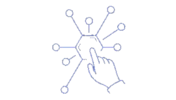Correlation is an easy way to allow different systems to communicate with one another. Usually, we use a correlation ID as a common reference between multiple systems. When a system completes a given task, it can notify other systems in the network which, in turn use the correlation ID
Author: themulewhisperer
Recently, I came across an interesting integration use-case; an “API” that actually expected a multipart/form-data MIME type rather than the more conventional application/json or application/xml. Well, this triggered a sense of overwhelming nostalgia. It took me back to a time where we used web pages to complete forms which
When building MuleSoft API’s, RAML is the starting point. It is from here that we design our API structure and it is from here that we generate our initial Mule Flows. Handling null Values There is a plethora of RAML tutorials out there, both within and outside of
All too often, API designers and developers work to peripheral requirements instead of focusing on exposing the functionality of the underlying system for which they are developing an API. This creates brittle solutions that are not reusable. In fact, this type of solution amounts to little more than point-to-point
keep calm and carry on coding When it comes to designing API’s we often try to follow a Purist approach. We also find frustrating when external API’s do not follow that same ideal. Check out this great article by Phil Sturgeon that outlines the differences between REST vs RPC
Several years ago, I encountered a client that made the cardinal mistake; they hired a team of “resources” to deliver their project instead of seeking out the right skills. In this instance the tool they used was not MuleSoft but rather a Business Process Management System with powerful API
Challenge Extended… Can Mule expose an API without any understanding of the service it is supposed to proxy? Recently, a client asked me to expose an existing service via a simple proxy that would allow external API consumers to pass through a firewall — and to do it using
It is so easy to lose sight of business vision in favour of a quick win — often with devastating consequences. Tactical decisions are taken in the moment, usually with the aim of delivering a quick solution to an immediate problem. However, more often than not, these decisions jeopardize
When it comes to String manipulation, Dataweave 2.0 offers a myriad of great out-of-the-box functions. However, even seasoned developers can begin to feel the frustration build when their Dataweave scripts don’t work as advertised; sometimes the Mule just appears to be stubborn. One such area is in the String
In our article Putting the “Unit” in MUnit — Shining Light on a Dark Art, we covered some of the common errors developers make when testing their applications. In this article, we will delve into the art of testing Transforms, specifically. Frankly, this is where the lion’s share of
